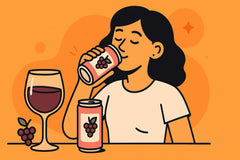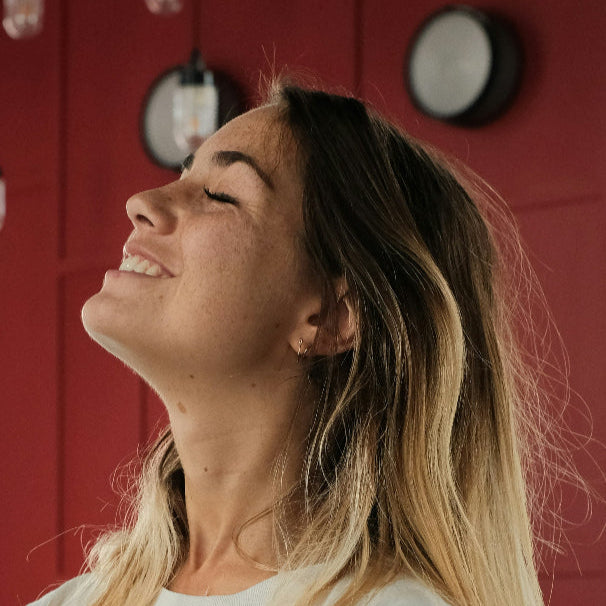There’s something quietly radical happening in the wine world. For centuries, wine has been poured from glass bottles, uncorked with ceremony, and served in stemmed glasses. It’s been steeped in tradition, often with a side of snobbery. But as we step into 2025, the rules are changing—and not just a little. Wine is getting a modern makeover, and it’s happening one aluminum can at a time.
What started as a curiosity on store shelves has become a full-blown movement. Canned wine is no longer a novelty; it’s a lifestyle choice.
If you’ve been side-eyeing the wine aisle wondering whether to make the switch, 2025 might just be your year. Here’s why canned wine isn’t just a trend—it’s the future of sipping.
The Rise of Canned Wine: A Trend That’s Here to Stay
Wine in a can sounds like a punchline until you realize it’s been quietly gaining ground for over a decade. The first canned wines hit the market in the early 2000s, but it wasn’t until the mid-2010s that the format started to gain real traction. Millennials, with their preference for convenience and casual experiences, helped push it into the mainstream. And now, Gen Z is picking up the torch, favoring brands that align with their values—sustainability, transparency, and authenticity.
According to a report by Grand View Research, the global canned wine market is projected to reach $571.8 million by 2028, growing at a compound annual rate of 13.2%. That’s not a blip—it’s a seismic shift. And it’s not just about novelty; it’s about rethinking how wine fits into our lives.
In 2025, canned wine isn’t just surviving—it’s thriving. And it’s not going anywhere.
Convenience Without Compromise
Let’s be honest: wine bottles are kind of a hassle. You need a corkscrew, you need a glass, and once you open it, you’re on the clock before it goes bad. Not exactly ideal for a picnic, a hike, or a Tuesday night when you just want one glass.
This is where canned wine shines. It’s portable, lightweight, and doesn’t require any accessories. You can toss a few cans in your bag and head to the beach, a tailgate, or your friend’s rooftop without worrying about broken glass or unfinished bottles.
Think about all the places where a bottle just doesn’t make sense:
- Outdoor concerts where glass is banned
- Camping trips where space is limited
- Poolside hangouts where safety matters
- Long train rides or flights (yes, TSA-friendly sizes exist)
In all these scenarios, canned wine isn’t just convenient—it’s the only option that makes sense.
Sustainability and Eco-Friendly Packaging
Glass bottles may look elegant, but they’re not exactly eco-friendly. They’re heavy to ship, fragile to handle, and energy-intensive to produce. Aluminum cans, on the other hand, are a sustainability win.
According to the Aluminum Association, nearly 75% of all aluminum ever produced is still in use today. Cans are infinitely recyclable, and they require less energy to transport thanks to their lightweight design. That’s a big deal in a world where carbon footprints matter more than ever.
By opting for cans over bottles, you helping cut down on emissions and waste—without compromising on quality. It’s wine that tastes good and feels good to drink.
And in 2025, consumers are paying attention. Sustainability isn’t a bonus anymore; it’s a baseline expectation. Choosing canned wine is one small way to align your habits with your values.
Portion Control and Freshness
Ever opened a bottle of wine, poured one glass, and then watched the rest go stale on your kitchen counter? Yeah. You’re not alone. Bottles are great for dinner parties, but not so much for solo sipping or casual nights in.
Canned wine solves that problem with single-serve portions that stay fresh until the moment you crack them open. No oxidation, no waste, no pressure to finish the whole thing.
Graham + Fisk’s Wine-In-A-Can offers 250ml cans—just about a glass and a half. That’s enough to enjoy without overdoing it. And because the can is sealed, the wine inside stays as fresh as the day it was canned. No weird aftertaste. No flat flavors. Just clean, crisp wine every time.
It’s portion control without feeling like you’re compromising. And in a culture that’s increasingly mindful about consumption, that matters.
Quality and Variety: Breaking the Stigma
Let’s address the elephant in the room: the idea that canned wine is somehow “less than.” For years, wine in a can was dismissed as cheap or gimmicky. But that perception is changing—and fast.
Thanks to advances in canning technology and a new wave of winemakers who care more about flavor than formality, canned wine is finally getting the respect it deserves. The liners inside modern cans prevent any interaction between the wine and the aluminum, preserving the integrity of the flavor.
Customer reviews echo the sentiment. People are surprised—pleasantly so—by how good canned wine can be. And once they try it, they rarely go back.
Perfect for Social Occasions and Modern Lifestyles
Wine doesn’t have to be serious. It doesn’t have to be served in crystal glasses or paired with a five-course meal. Sometimes, it’s just about cracking open a can with friends and enjoying the moment.
Canned wine fits seamlessly into modern social settings. Whether you’re hosting a backyard BBQ, heading to a music festival, or lounging at the beach, it’s the kind of drink that travels well and doesn’t require a setup.
In a world where we’re all juggling a million things, canned wine is one less thing to overthink.
Affordability and Accessibility
Wine has a reputation for being expensive, but canned wine flips that script. Without the costs associated with bottling, corking, and shipping heavy glass, brands can offer high-quality wine at a lower price point.
Cans are priced to be accessible, whether you’re stocking up for a party or just trying something new. And because you’re not committing to a full bottle, it’s easier to experiment with different varietals and blends.
You’ll find their wines in major retailers, local shops, and online—with delivery options that make stocking your fridge as easy as clicking a button. In 2025, convenience and affordability aren’t luxuries—they’re expectations. And canned wine delivers both.
What to Look for When Choosing a Canned Wine
Not all canned wines are created equal. If you’re new to the format, here are a few things to keep in mind:
Check the Ingredients
Look for wines made with real grapes—not “wine products” or flavored malt beverages. Graham + Fisk’s Wine-In-A-Can uses California-grown grapes and nothing artificial.
Understand the Varietals
Just like bottled wine, canned wine comes in different styles. Whether you prefer a crisp white or a bold red, there’s a can for you. Try a few to find your favorite.
Read the Label
Pay attention to alcohol content, blend details, and serving size. Transparency matters, and good brands will tell you exactly what’s inside.
Look for Trusted Brands
Stick with brands that have a track record of quality. Graham + Fisk’s has been doing this for years, and their reputation speaks for itself.
Why 2025 Is the Year to Make the Switch
Wine is evolving, and so are we. In 2025, canned wine isn’t just a quirky alternative—it’s a smart, sustainable, and seriously tasty choice. It fits our lives better. It respects our time, our budgets, and our planet.
So the next time you’re browsing the wine aisle, don’t skip the cans. Pick one up. Pop it open. And see for yourself what the future of wine tastes like.
Ready to try it? You can find Graham + Fisk’s Wine-In-A-Can here.
FAQ: What You Might Still Be Wondering
Can canned wine go bad?
Unopened, canned wine has a shelf life of about 12–18 months. Once opened, it should be consumed right away—just like any other wine.
Is canned wine safe to drink?
Absolutely. Modern cans are lined to prevent any interaction between the wine and the aluminum, ensuring safety and flavor preservation.
How long does canned wine last?
Stored in a cool, dry place, it can last over a year. Always check the “best by” date on the can.
Does canned wine taste different?
Not if it’s done right. As long as you purchase from a brand that uses high-quality wine and advanced canning methods to ensure the flavor stays true.







